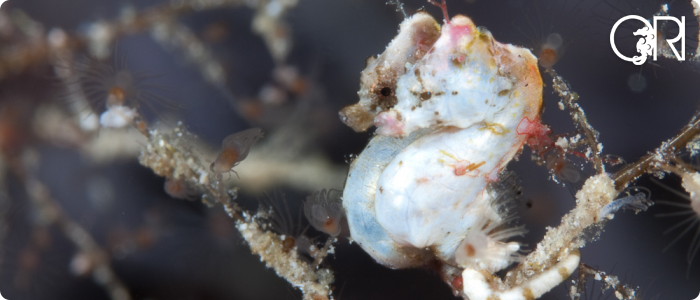Dr Richard Smith knows a thing or two about pygmy seahorses – those ever-so-cute and tiny members of the seahorse family. While researching for his PhD, he spent hundreds of hours watching them in their natural habitats clinging to coral fans on reefs in Southeast Asia. And he’s spent a long time watching people watching seahorses.
Who better, then, to write a guide on how to dive with these lovely critters without upsetting them? Because as you might imagine, they don’t much like being prodded, poked or having bright lights flashed in their faces. But how many pictures should you take of an individual pygmy and what else can you do so it doesn’t get stressed out?
I’m often asked if seahorses mind it when people show up and take their pictures. As I write in my book, seahorse tourism has to be a much better option than killing them to make into medicines or souvenirs. But until now I couldn’t find a lot of information about the impacts of diving with them and photographing them. (One study looked into diving with little hidden reef creatures including seahorses and essentially said it’s okay, as long as you don’t smash up coral with your dive fins).
So, it’s fantastic that Richard has compiled some detailed and accessible advice on diving with pygmy seahorses based on all his research and experience in the water with them (and it comes with some cute cartoon illustrations too).
 While researching for my book, I had a great chat with Denise Tackett about how she discovered a new pygmy seahorse in Indonesia that was eventually named after her. And by the looks of Richard Smith’s website and blog, there is definitely something to be liked about anyone who shows this much devotion to such tiny, easily overlooked creatures.
While researching for my book, I had a great chat with Denise Tackett about how she discovered a new pygmy seahorse in Indonesia that was eventually named after her. And by the looks of Richard Smith’s website and blog, there is definitely something to be liked about anyone who shows this much devotion to such tiny, easily overlooked creatures.
Pygmy seahorses take a lot of time and patience. And I must admit, that despite all my time diving and working in SE Asia, I’ve not seen one. My excuse is that I’m sure I wasn’t looking in the right places. But at least next time I’ll know what to do – and what not to do.

In brief, Richard’s advice for diving with and photographing pygmy seahorses is:
1. Do Not Touch Pygmy Seahorses
2. Do Not Touch their Gorgonian
3. Do Not Use a Torch/Flashlight
4. Five Photo Limit per Diver
5. No Artificial Light for Video
6. No Night Diving with Pygmy Seahorses
7. Beware of the Surrounding Environment
Does this hold for other seahorse species? My guess is yes, and Richard told Seamonster:
‘my research was specifically on pygmies but certain actions like no touching should really be universal for divers & underwater photographers’
Read more about Richard’s work at his blog, including his great photography and some wonderful insights into the lives of pygmy seahorses.
And download the pygmy seahorse Code of Conduct here (PDF).

Leave a Reply